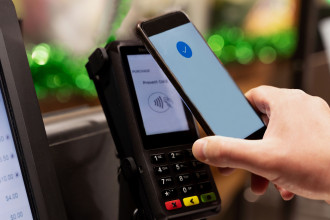-
9.Conclusion:
Understanding customer experience:
Customer experience (CX) has become increasingly important to organisations in today's competitive business environment. Delivering good CX can lead to increased customer loyalty, positive word-of-mouth and, ultimately, more revenue. In this article, we'll explore the specifics of customer experience, the benefits of delivering good CX, ways to improve CX, and how technology can improve CX. Understanding customer experience: Customer experience is the overall impression a customer has of a company, based on every interaction they have with that company. This includes touch points such as customer service, product or service quality, intake and marketing. All these touch points come together to create a unique experience for the customer, which can be good or bad. A good experience can lead to increased customer loyalty and advocacy, while a bad experience can lead to lost customers and negative word of mouth.
The benefits of improving the customer experience:
Improving the customer experience has many benefits for businesses. Firstly, it can increase customer loyalty, meaning that customers are more likely to do business with the company in the future. Secondly, it can lead to word-of-mouth, as satisfied customers are more likely to recommend the company to their friends and family. Finally, a good customer experience can lead to increased profits, as customers are willing to pay more for products or services from companies they trust and value.
Measuring customer experience:
To improve the customer experience, companies need to be able to measure it. Data such as Net Promoter Score (NPS) and Customer Satisfaction Score (CSAT) can be used to measure customer experience and identify areas for improvement. NPS measures how likely customers are to recommend a company to others, while CSAT measures overall customer satisfaction with a company.
Specific Aspects of Customer Experience:
There are several specific aspects that contribute to customer experience, including:
- Product/service quality: The quality of a company's product or service can have a significant impact on customer experience. Companies that provide high-quality products or services are more likely to receive positive customer feedback.
- Customer service: Customer service is another important aspect of CX. Companies that provide responsive, friendly and knowledgeable customer service are more likely to retain customers.
- Ease of use: The ease of use of a product or service is also an important aspect of CX. Products that are easy to use and require minimal effort from the customer can lead to higher customer satisfaction.
- Personalisation: Personalisation is becoming increasingly important to CX. Companies that offer personalised experiences, such as personalised product recommendations or tailored marketing messages, are more likely to make a positive impression on customers.Brand image: A company's brand image can also influence CX. Companies with a strong brand image are more likely to attract and retain customers.
The benefits of delivering a positive CX:
Delivering a positive CX can lead to several benefits for companies:
- Increased customer loyalty: Customers are more likely to remain loyal to a company that delivers a positive CX. Loyal customers can provide repeat business and positive word-of-mouth, which can help attract new customers.
- Improved customer satisfaction: A positive CX can lead to increased customer satisfaction, which can lead to increased sales and profitability.
- Increased revenue: Companies that provide a positive CX are more likely to generate higher revenues than those that do not.
- Competitive advantage: Delivering a positive CX can give companies a competitive advantage over their rivals.
Strategies to improve CX:
- Personalization: Customers appreciate when businesses tailor their experience to their specific needs and preferences. By collecting data on their past purchases, behavior, and demographics, businesses can provide personalized recommendations and promotions that increase customer satisfaction.
- Omnichannel Support: Offering customers support across multiple channels (e.g., email, phone, chat, social media) allows them to interact with the business in their preferred way. Businesses that provide consistent and seamless support across all channels create a better experience for customers.
- Customer Feedback: Asking for and listening to customer feedback is critical to improving the customer experience. Surveys, reviews, and social media comments can provide valuable insights into areas where a business can improve.
- Empowered Employees: Customers appreciate when employees are knowledgeable and empowered to make decisions that benefit the customer. Investing in employee training and giving them the tools to resolve customer issues quickly can improve the overall experience.
- Timely Communication: Customers expect prompt responses to their inquiries and concerns. Providing timely and accurate information can help build trust and loyalty.
- Consistency: Consistency is key to creating a positive customer experience. Customers should have the same experience whether they interact with the business online or in-person, and across different locations and channels.
- Continuous Improvement: A commitment to continuously improving the customer experience is essential for businesses that want to stay competitive. Regularly assessing and refining customer service processes can help identify areas for improvement and keep customers satisfied.
How technology can improve CX:
- Artificial intelligence (AI): AI-powered chatbots can provide customers with instant answers to their questions, 24/7, without the need for human intervention. AI can also be used to personalise the customer experience by offering product recommendations, sending personalised emails, and tailoring advertising messages.
- Virtual and augmented realities (VR/AR): VR and AR can provide customers with immersive experiences that allow them to try products or services before making a purchase. For example, furniture retailers can use AR to allow customers to see how a piece of furniture would look in their home before they buy it. This can lead to increased customer satisfaction and reduced product returns. VR and AR can also be used for training purposes, allowing employees to experience simulations of real-life scenarios and improve their skills. Overall, VR and AR can improve CX by providing customers with interactive and engaging experiences that are memorable and enjoyable.Businesses can use AR to allow customers to visualise how a piece of furniture would look in their home before they buy it.
- CRM programmes: CRM software can help companies manage customer interactions and personalise customer experiences. It can also provide companies with valuable insights into customer behaviour, preferences, and needs.Social media: Social media platforms can be used to engage with customers, answer their questions and provide personalised support. Social media can also be used to create a positive brand image by sharing customer success stories and responding to customer feedback.Mobile applications: Mobile applications can provide customers with a seamless and personalised experience, allowing them to access information, make purchases and communicate with the company on the go.
- Social media: Social media platforms can be used to engage with customers, answer their questions and provide personalised support. Social media can also be used to create a positive brand image by sharing customer success stories and responding to customer feedback.
- Mobile applications: Mobile applications can provide customers with a seamless and personalised experience, allowing them to access information, make purchases and communicate with the company on the go.

Case studies:
Real-world examples of companies that have successfully improved their customer experience can provide valuable insights and inspiration for other companies looking to do the same. For example, Amazon has become famous for its customer-centric approach, providing fast and efficient shipping, personalised product recommendations and a seamless shopping experience across multiple channels. Here are some more examples:
- Zappos: Zappos, an online shoe and clothing retailer, is known for its exceptional customer service. Zappos has a 365-day return policy, free shipping and returns, and a customer service team that is available 24/7. They also empower their employees to go above and beyond to satisfy customers, such as sending a customer flowers when they found out their mother had passed away.
- Southwest Airlines: Southwest Airlines has consistently ranked high in customer satisfaction due to its focus on the customer experience. They offer no change fees, free checked bags, and a simple, transparent pricing structure. They also have a fun, quirky brand personality that sets them apart from other airlines.
- Amazon: Amazon is known for its customer-centric approach, offering fast shipping, easy returns, and a wide selection of products. They also use customer data to personalize recommendations and promotions, making it easy for customers to find what they are looking for.
- Disney: Disney is a master of creating magical experiences for their customers. From their theme parks to their movies and merchandise, they go above and beyond to create a sense of wonder and delight. They also train their employees to provide exceptional customer service, creating a seamless experience for guests.
- Apple: Apple has built a loyal customer base by creating products that are intuitive, easy to use, and aesthetically pleasing. They also offer exceptional customer support, with in-store tech support and a customer service team that is available 24/7.
These companies have all prioritized the customer experience, and have built their success on providing exceptional service and creating positive emotional connections with their customers. By focusing on the customer and continually refining their approach, they have built strong, loyal customer bases and have become leaders in their industries.
Conclusion:
In conclusion, customer experience (CX) has become a crucial factor for businesses across industries. In today's competitive marketplace, providing a positive experience for customers is essential for building brand loyalty, increasing customer satisfaction, and driving revenue growth.
As technology continues to evolve, the way businesses approach CX will also evolve. Companies will need to keep up with emerging trends and technologies to remain competitive, such as chatbots, artificial intelligence, and personalized experiences.
The future of CX will also be shaped by changing consumer behaviors and preferences. As younger generations become the primary consumers, businesses will need to adapt to their preferences, such as a desire for fast, convenient, and personalized experiences.
Overall, the importance of CX is only going to continue to grow in the years to come. Businesses that prioritize the customer experience and invest in the right technologies and strategies will be well-positioned for success. By focusing on the customer and continually refining their approach to CX, businesses can build strong, loyal customer bases and differentiate themselves from competitors.
Quickscout
Looking for suitable
technology providers?
Start scouting!






